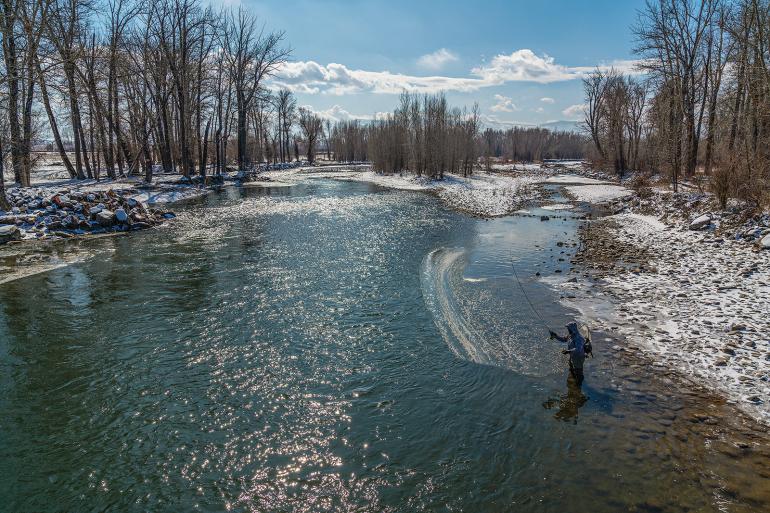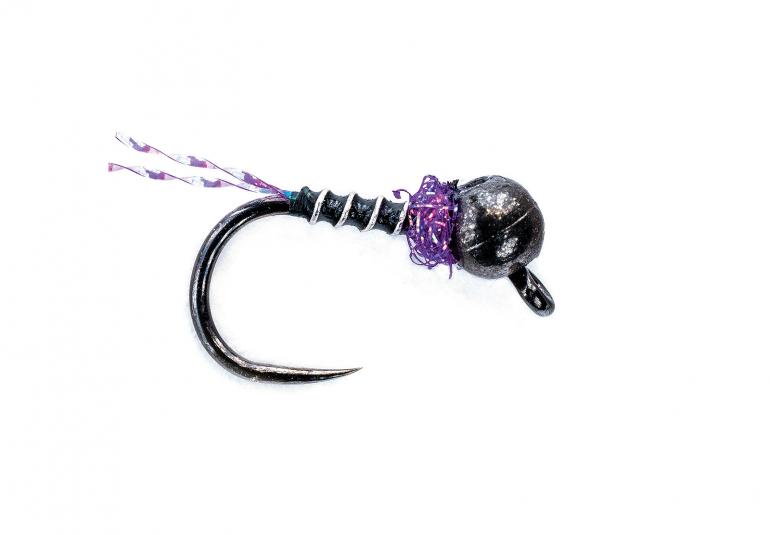Cold Snack
Tying the Perdi-Midge.
Winter can be some of the best fishing in Montana, if you’re searching for solitude and scenery. While dry-fly and streamer fishing tend to be the most popular ways to catch trout, nymphing is undeniably the most productive method during winter. A variety of fly patterns can produce, but I’ll almost always have a midge tied on. The Perdi-Midge is a modern twist on a classic pattern. In winter, fish tend to be more lethargic and unwilling to move for a meal, so you’ll find them in deeper, slower pockets. This nymph pattern gets close to the bottom, which is tempting to fish as they don’t have to move far. These midge variations work in many colors and sizes, from 16 to 20. Try this pattern in your favorite color, and you’ll be sure to net some fish this season.
Materials
Hook: Umpqua X-Series XC210BL size 16-20
Bead: 3/32 or 7/64 slotted tungsten, black-nickel
Thread: Black 70-denier UTC
Body: Purple-pearl midge crystal flash
Wire: Small silver ultra-wire
Dubbing: Purple ice dub
Resin: Solarez Bone-Dry UV-cure
This nymph pattern gets close to the bottom, which is tempting to fish as they don’t have to move far.
Instructions
- Put the slotted tungsten bead on the hook and place the hook in your vise. Attach thread to the hook.
- After a couple of turns with the thread, take two pieces of midge-sized crystal flash and tie them down the top of the hook shank, stopping your thread wraps at the bend of the hook. Trim the flash at the same length as your hook gap.
- Attach your ultra-wire to the close side of the hook shank and wrap your thread forward, being sure to create a smooth thread body. Stop the thread behind the bead.
- Making open spiral wraps, advance your wire forward, creating equal segments up the body until you come to the back of the bead. Tie the wire off and helicopter your wire to break it free.
- Cover the body of the fly in a thin layer of thin resin and cure with a UV tying light.
- Expose 3-4 inches of tying thread and take the smallest amount of ice dubbing to create a short, sparse dubbing noodle.
- Wrap the dubbing noodle directly behind the bead creating a small, short thorax behind the bead.
- Do a 3-4 turn-whip finish and apply your favorite head cement or UV resin to complete the fly.
Drew Daniels works at Bozeman Fly Supply.











